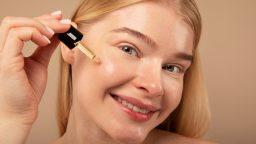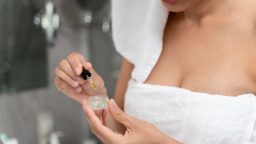If you’re looking for a non-invasive way to rejuvenate your skin and address common concerns like dullness, fine lines, and acne scars, microdermabrasion may be the perfect solution. This popular skincare treatment is designed to exfoliate the skin, remove dead skin cells, and promote new cell growth, giving your complexion a smoother, brighter, and more youthful appearance. Whether you’re considering professional treatment or an at-home device, here’s everything you need to know about microdermabrasion and its benefits.
- What is Microdermabrasion?
Microdermabrasion is a cosmetic procedure that exfoliates the skin by removing the outermost layer of dead skin cells. It’s often called a „mini peel” because it’s a less intense alternative to chemical peels. The treatment is typically done using a device that either sprays tiny crystals onto the skin or uses a diamond-tipped wand to gently buff away the dead skin cells.
There are two primary types of microdermabrasion:
- Crystal Microdermabrasion: Uses fine crystals (often aluminum oxide) to exfoliate the skin. These crystals are sprayed onto the skin and then suctioned away, along with the dead skin cells.
- Diamond Microdermabrasion: A more advanced form, this method uses a diamond-tipped wand to exfoliate the skin and remove dead skin cells. The diamond tip is non-abrasive but effective at gently buffing the skin’s surface.
- How Does Microdermabrasion Work?
During a microdermabrasion session, the device is gently moved over the surface of the skin. The crystals or diamond tip work to exfoliate the top layer of skin, stimulating the production of new skin cells. At the same time, the suction process removes the debris and dead skin cells, leaving the skin smoother and brighter.
The exfoliation process also helps to:
- Promote collagen production: By removing the surface layer of skin, microdermabrasion encourages the production of new, healthy skin cells. This boosts collagen, which improves skin texture and firmness.
- Improve blood circulation: The stimulation of the skin during the treatment promotes blood flow, which helps deliver nutrients to the skin and accelerates healing.
- Remove impurities: The suction process helps to unclog pores, which can be especially beneficial for those with acne-prone skin.
- What Are the Benefits of Microdermabrasion?
Microdermabrasion offers a wide range of benefits, making it an attractive option for many people looking to improve their complexion. Some of the most notable benefits include:
- Brightens and Evens Skin Tone: Microdermabrasion removes dead skin cells and promotes fresh skin growth, resulting in a brighter, more even complexion. It’s especially effective at reducing dullness caused by sun damage or aging.
- Improves Skin Texture: By exfoliating the skin, microdermabrasion smooths out rough patches and refines skin texture, making it feel softer and look more youthful.
- Reduces Fine Lines and Wrinkles: Microdermabrasion stimulates collagen production, which can help reduce the appearance of fine lines and wrinkles, particularly around the eyes and mouth.
- Helps with Acne Scars and Hyperpigmentation: The treatment can be especially effective for diminishing the appearance of acne scars and hyperpigmentation caused by sun damage or hormonal changes.
- Unclogs Pores and Prevents Breakouts: The exfoliation and suction process help to clear out clogged pores, reducing the likelihood of acne breakouts.
- Improves Product Absorption: After a microdermabrasion treatment, the skin is more receptive to skincare products, allowing them to penetrate deeper and work more effectively.
- Who Can Benefit from Microdermabrasion?
Microdermabrasion is suitable for most skin types and tones, and it can address a variety of skin concerns. However, there are some exceptions. People with sensitive skin, active acne, rosacea, or certain skin conditions may not be ideal candidates for this treatment, as it can cause irritation or exacerbate existing issues.
Ideal candidates for microdermabrasion include those with:
- Dull or uneven skin tone
- Fine lines and wrinkles
- Sun damage or age spots
- Acne scars or hyperpigmentation
- Enlarged pores
- Rough, textured skin
If you’re unsure whether microdermabrasion is right for your skin, it’s best to consult with a dermatologist or licensed aesthetician who can assess your skin type and determine the most appropriate treatment.
- What to Expect During and After the Treatment
A typical microdermabrasion session lasts about 30 to 60 minutes, depending on the area being treated. Here’s what you can expect during the procedure:
During the Treatment:
- The skin is first cleaned thoroughly to remove makeup, dirt, and oil.
- The technician will use the microdermabrasion device to exfoliate the skin. You may feel a slight scratching or vibrating sensation, but the procedure is generally painless.
- Some people describe the sensation as a mild sandpaper-like feeling, while others say it feels like a gentle massage.
After the Treatment:
- Your skin may appear slightly red or flushed immediately after the procedure, similar to a mild sunburn. This typically subsides within a few hours.
- You may also experience slight dryness or tightness, as the exfoliation process removes the outer layer of skin. This is normal and temporary.
- There is no downtime, so you can return to your normal activities immediately after the treatment. However, it’s essential to avoid direct sun exposure for at least 24 hours and use sunscreen regularly.
- For optimal results, you may need multiple treatments, depending on your skin concerns. Most people see noticeable improvements after 3-5 sessions spaced about 2-4 weeks apart.
- Can You Do Microdermabrasion at Home?
While professional microdermabrasion treatments can provide more dramatic results, there are at-home devices available that allow you to enjoy the benefits of exfoliation in the comfort of your home. These at-home microdermabrasion devices typically use suction and a gentle exfoliating tip or crystals to provide a similar effect to the professional treatment.
At-home devices:
- PMD Personal Microderm: A popular at-home device that uses spinning discs and suction to exfoliate the skin.
- Neutrogena Microdermabrasion System: An affordable option with gentle exfoliating discs for at-home use.
Tip: If you’re using an at-home device, be sure to follow the manufacturer’s instructions carefully to avoid over-exfoliating or irritating your skin. Start with a lower intensity setting and use the device once a week to build your skin’s tolerance.
- Microdermabrasion vs. Chemical Peels
Microdermabrasion is often compared to chemical peels, as both are exfoliation treatments designed to improve skin texture and appearance. However, there are some key differences between the two:
- Microdermabrasion is a physical exfoliation that removes the outermost layer of dead skin cells through mechanical means (crystals or a diamond tip).
- Chemical peels use a chemical solution to exfoliate the skin and promote new skin growth. They penetrate deeper into the skin and can treat more significant issues like deep wrinkles, acne scars, and hyperpigmentation.
Microdermabrasion is generally gentler and requires little to no downtime, while chemical peels can cause peeling and redness for a few days following the treatment. Depending on your skin’s needs, one may be more suitable than the other.
- Is Microdermabrasion Right for You?
Microdermabrasion can be an effective and non-invasive way to improve the appearance of your skin, especially for those with concerns like dullness, fine lines, acne scars, and uneven texture. However, it’s essential to consult with a skincare professional or dermatologist before undergoing treatment, particularly if you have sensitive skin or certain skin conditions.
If you’re looking for a quick, easy way to refresh your complexion, microdermabrasion might be a great option for you. Whether done professionally or with an at-home device, this treatment can help reveal smoother, more radiant skin with minimal downtime.
Conclusion
Microdermabrasion is a highly effective, non-invasive treatment that can rejuvenate the skin and address common signs of aging, acne scars, and uneven skin texture. Whether you’re considering professional treatments or exploring at-home options, it’s important to choose a method that suits your skin type and needs. By understanding how microdermabrasion works and what to expect, you can enjoy brighter, smoother, and more youthful-looking skin with confidence.





